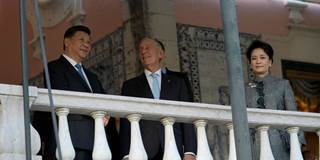Notwithstanding the 90-day trade truce on which US President Donald Trump and Chinese President Xi Jinping recently agreed, tensions between the world's two largest economies remain high. But while both countries may be tempted to turn inward, there are five reasons why they would be wise not to.
SHANGHAI – On the face of it, China and the United States both look as though they would be relatively insulated if trade tensions continue to escalate. China’s exports to the US account for only 4% of its GDP, and its imports from the US amount to just 1% of GDP. In the US, with its large, domestically driven economy, the equivalent figures are 1% and 3%. But putting aside these headline numbers, a retreat from globalization by the world’s two largest economies would nonetheless entail significant costs.

SHANGHAI – On the face of it, China and the United States both look as though they would be relatively insulated if trade tensions continue to escalate. China’s exports to the US account for only 4% of its GDP, and its imports from the US amount to just 1% of GDP. In the US, with its large, domestically driven economy, the equivalent figures are 1% and 3%. But putting aside these headline numbers, a retreat from globalization by the world’s two largest economies would nonetheless entail significant costs.